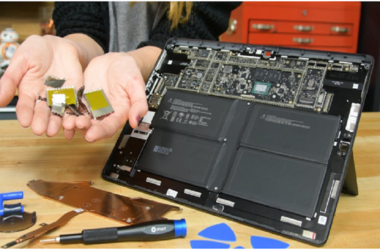Desktop operating systems and applications on a centralized server rather than individual devices. Here is a comprehensive overview of VDI solutions, including the definition of VDI, the benefits of VDI, and how it works.
What is VDI?
With VDI, each user has a virtual machine (VM) hosted on the server. This virtual machine contains a complete desktop operating system and all the necessary applications presented to the user via a remote connection.
How VDI Works
A VDI solution hosts virtual machines (VMs) on a centralized server. Each VM contains a full desktop operating system and all the necessary applications. When users connect to the VDI environment, they are presented with a virtual desktop running on the VM hosted on the server. This virtual desktop looks and behaves like a traditional desktop environment, with all the necessary applications and data.
The user interacts with the virtual desktop via a remote connection, typically using a remote desktop protocol (RDP) or virtual desktop interface (VDI) client. The client software runs on the user’s local device and connects to the server hosting the VM. The user’s input is transmitted to the server, which processes the input and sends the resulting output back to the client.
The server hosting the VMs must have sufficient resources to support multiple users simultaneously. This includes CPU, memory, storage, and network bandwidth. The server may also have specialized hardware, such as graphics processing units (GPUs), to support applications that require high-end graphics performance.
Benefits of VDI
VDI provides a range of benefits that can help organizations to improve their IT infrastructure, enhance security, reduce costs, and increase user productivity. They include the following:
Centralized Management
VDI enables organizations to manage desktop operating systems and applications from a centralized location, reducing the time and resources required to manage individual devices. Administrators can deploy new applications, manage security policies, and perform updates more efficiently without visiting individual devices.
Improved Security
VDI provides a more secure environment for desktop operating systems and applications by hosting them on a centralized server rather than individual devices. This eliminates the risk of data loss or theft from lost or stolen devices. VDI also allows organizations to enforce security policies, such as password complexity and encryption, and monitor user activity more efficiently.
Increased Mobility
With VDI, users can access their desktop operating systems and applications from anywhere, on any device, as long as they have a network connection. It enables employees to work remotely, collaborate with others, and access essential data and applications from the field or on the go.
Cost Savings
VDI can provide cost savings by reducing the hardware and software requirements for individual devices and reducing the time and resources required to manage and maintain those devices. Organizations can reduce their hardware costs by using thin clients or repurposing existing hardware for use as VDI clients. They can also reduce their software licensing costs by using VDI to centralize the licensing of desktop operating systems and applications.
Scalability
VDI solutions are highly scalable, allowing organizations to quickly and easily provision new desktops or applications as needed. This is particularly valuable for organizations that experience rapid growth or seasonal fluctuations in demand.
Disaster Recovery
VDI can help organizations maintain business continuity during a disaster or outage. Organizations can more easily back up and restore critical data and applications by hosting desktop operating systems and applications on a centralized server.
By leveraging VDI technology, organizations can create a more flexible, secure, and cost-effective desktop computing environment that meets the needs of today’s mobile workforce.
Key considerations when choosing a VDI solution
Choosing the right VDI (Virtual Desktop Infrastructure) solution can be a critical decision for an organization, as it impacts the end-user experience, security, and overall IT operations. Here are some key evaluations when selecting a VDI solution:
User Experience
The VDI solution should provide a seamless and responsive user experience, regardless of the user’s location or device. The solution should be able to support high-quality graphics, multimedia, and other bandwidth-intensive applications.
Security
Security is a top priority when deploying a VDI solution, and the solution should provide robust security features, like encryption, multi-factor authentication, and secure remote access. The solution should also offer granular control over user access and permissions.
Scalability
The VDI solution should scale easily to meet the organization’s needs without requiring significant investment in hardware or infrastructure. The solution should also be able to handle peak usage periods without impacting performance.
Cost
The cost of the VDI solution should be evaluated carefully, including hardware, software, licensing, and ongoing maintenance and support costs. The solution should provide a cost-effective alternative to traditional desktop computing and offer a good return on investment.
Integration
The VDI solution should be compatible with the organization’s IT infrastructure, including servers, storage, and network equipment. The solution should also be able to integrate with other applications and systems, such as identity and access management tools.
Management
The VDI solution should be easy to manage and maintain, with centralized management tools that allow administrators to quickly provision and de-provision desktops, manage user access and monitor performance.
Support
The VDI solution should provide robust support services, including technical support, training, and documentation. The vendor should have a good reputation for customer service and support and be responsive to any issues or concerns.
Compatibility
The VDI solution should be compatible with various devices, including desktops, laptops, tablets, and smartphones. The solution should also support multiple operating systems like Windows, Mac OS, and Linux.
Final thoughts
VDI solutions provide organizations with centralized management, improved security, increased mobility, and cost savings. With VDI, users can access their desktop operating systems and applications from anywhere, on any device, as long as they have a network connection. VDI works by hosting virtual machines (VMs) on a centralized server, and users interact with the virtual desktop via a remote connection using client software. As technology evolves, VDI solutions will become increasingly important for organizations looking to provide secure, flexible, and cost-effective desktop computing environments.






